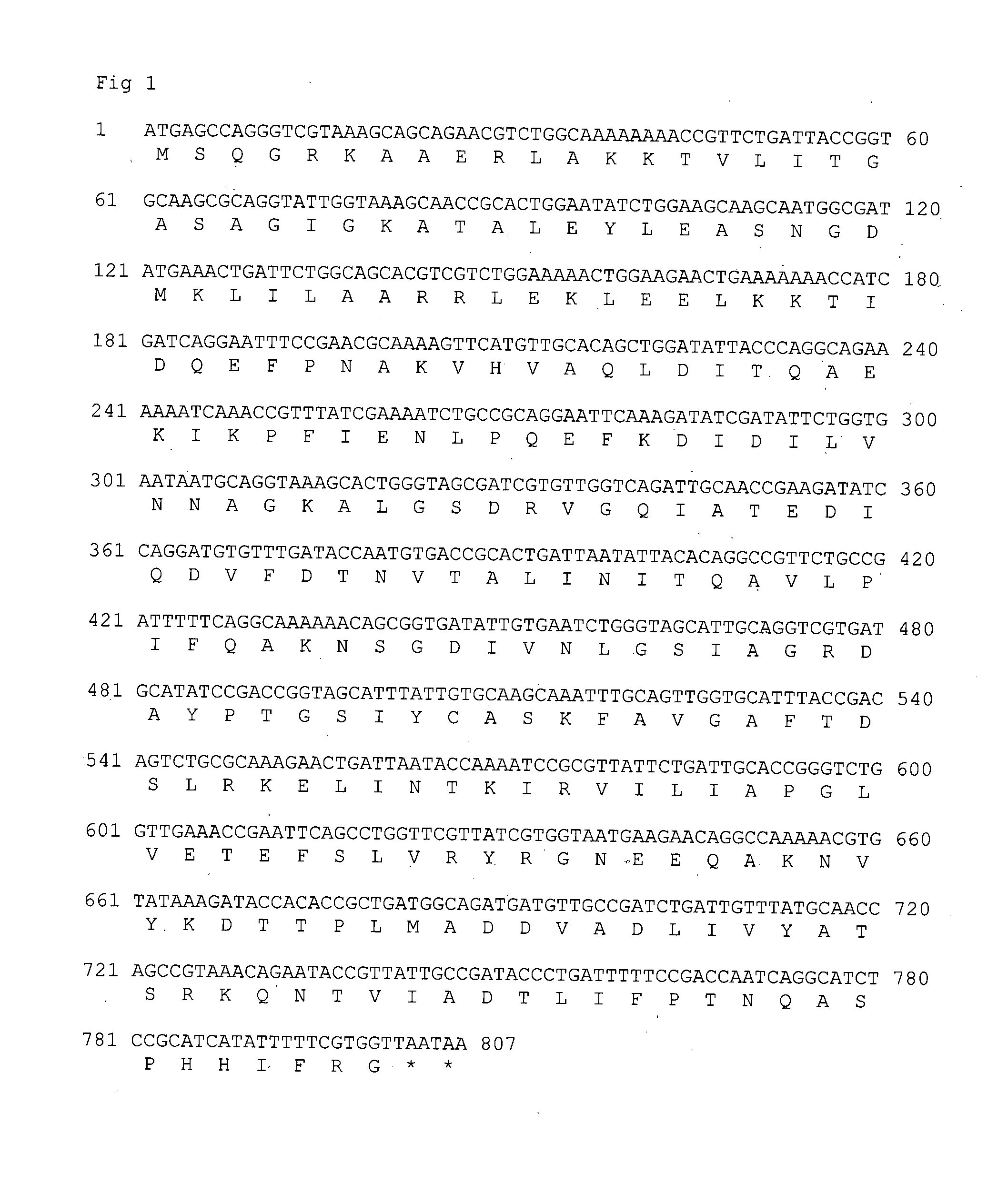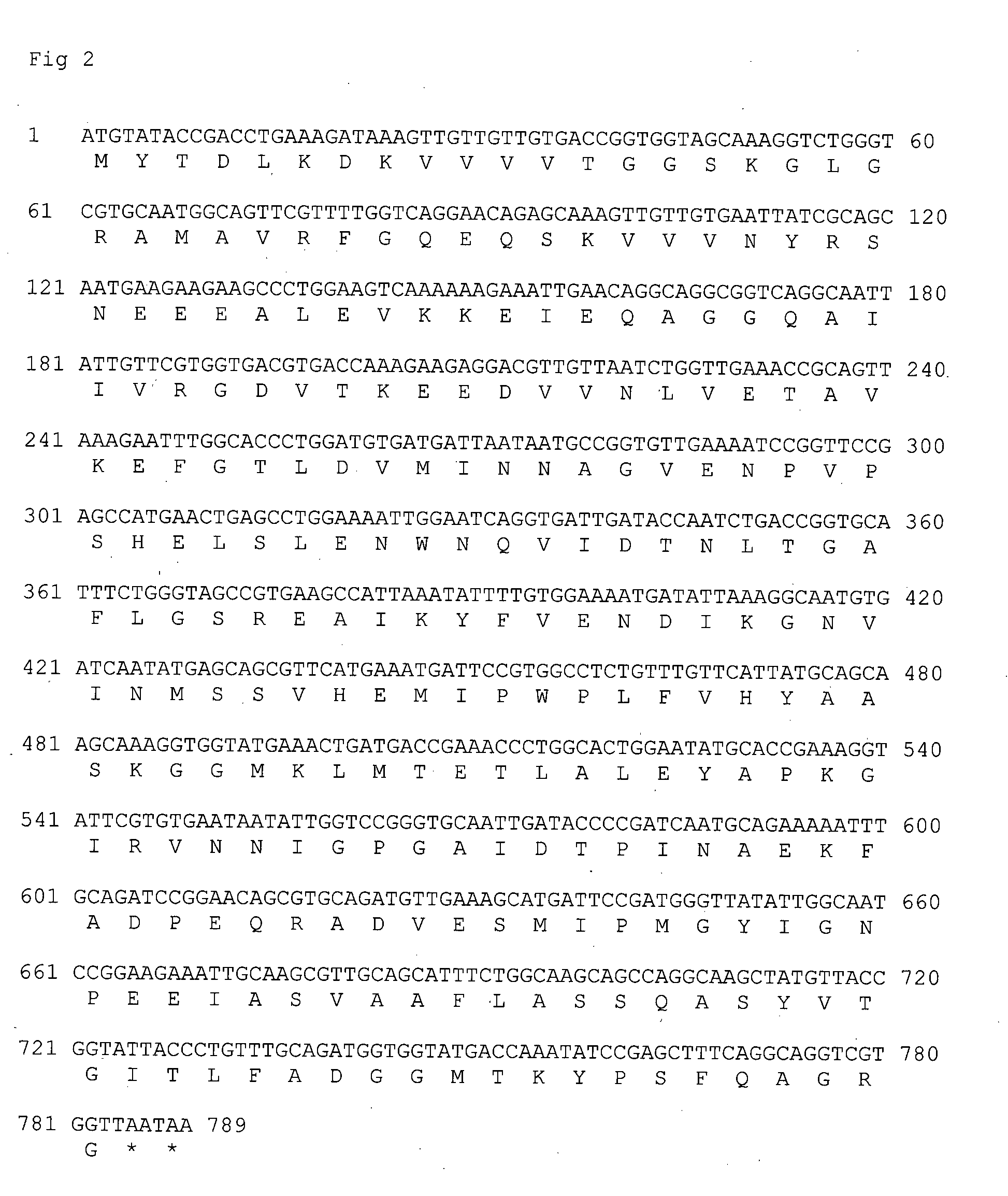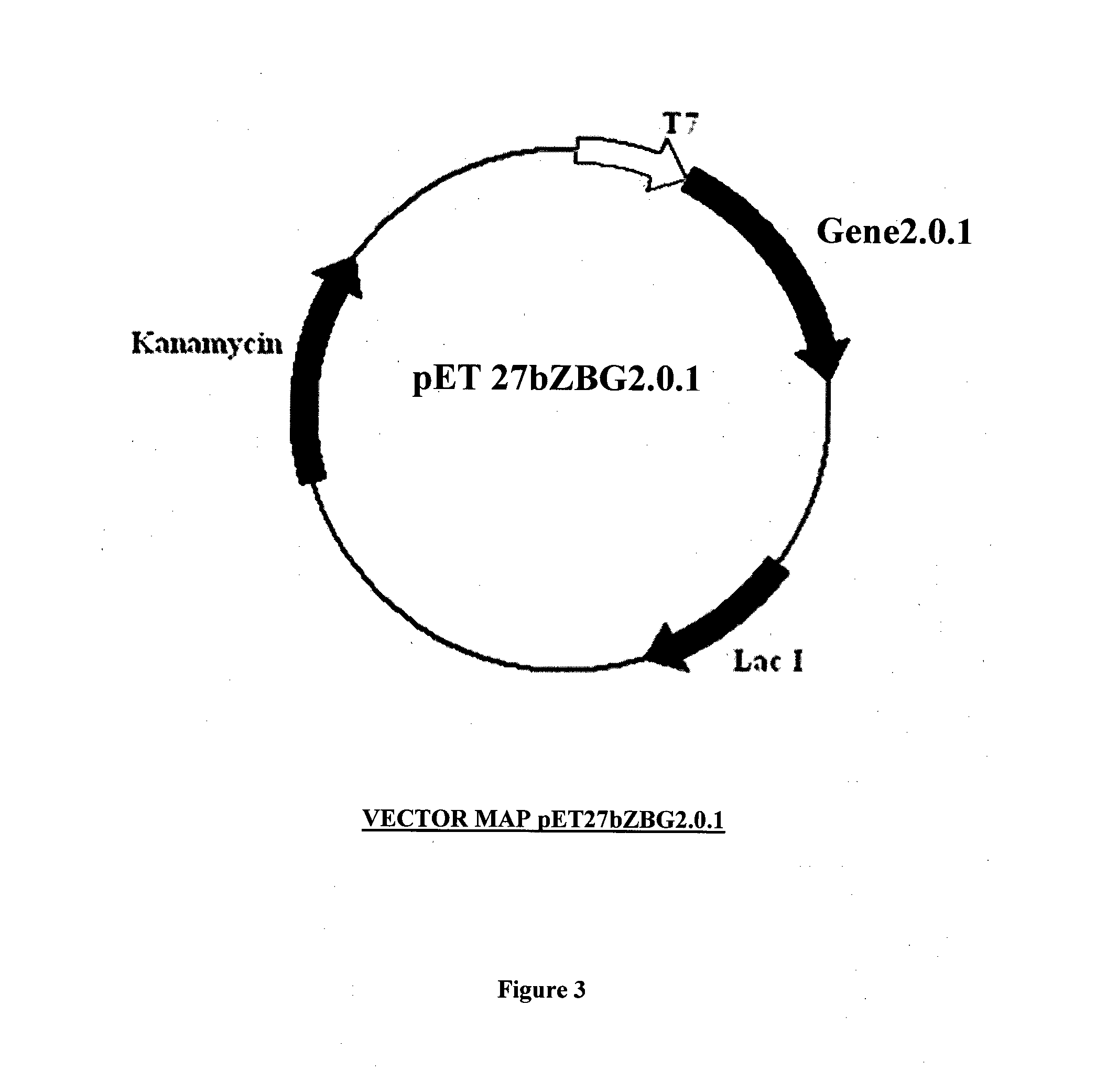Enzyme for the production of optically pure 3-quinuclidinol
a technology of enzymophore and enantiomer, which is applied in the field of newly identified polynucleotide sequences, can solve the problems of multiple steps, low overall yield of diastereomeric salt, and inability to provide satisfactory yield and enantiomeric excess of desired intermediates
- Summary
- Abstract
- Description
- Claims
- Application Information
AI Technical Summary
Benefits of technology
Problems solved by technology
Method used
Image
Examples
example 1
Construction of pET27bZBG2.0.1 for the Cloning and Expression Analysis of Oxidoreductase Enzyme
[0122]A codon optimized DNA sequence deduced from the polypeptide sequence as shown in sequence id no. 1 was cloned in a pET11a plasmid vector. The ligated DNA was further transformed into competent E. coli cells and the transformation mix was plated on Luria agar plates containing ampicillin. The positive clones were identified on the basis of their utilizing ampicillin resistance for growth on the above Petri plates and further restriction digestion of the plasmid DNA derived from them. Clones giving desired fragment lengths of digested plasmid DNA samples were selected as putative positive clones. One of such putative positive clones was submitted to nucleotide sequence analysis and was found to be having 100% homology with the sequence used for chemical synthesis. This clone was named pET11aZBG2.0.1. Plasmid DNA isolated from this clone was transformed into the E. coli expression host,...
example 2
Construction of pET27bZBG13.1.1 BL21 (DE3) for the Expression Analysis of Cofactor-Regenerating Enzyme (GDH)
[0123]A codon optimized DNA sequence encoding GDH deduced from the polypeptide sequence as shown in sequence id no. 2 was cloned in a pET11a plasmid vector. The ligated DNA was further transformed into competent E. coli cells and the transformation mix was plated on Luria agar plates containing ampicillin. The positive clones were identified on the basis of their utilizing ampicillin resistance for growth on the above Petri plates and further restriction digestion of the plasmid DNA derived from them. Clones giving desired fragment lengths of digested plasmid DNA samples were selected as putative positive clones. One of such putative positive clones was submitted to nucleotide sequence analysis and was found to be having 100% homology with the sequence used for chemical synthesis. This clone was named pET11aZBG13.1.1. Plasmid DNA isolated from this clone was transformed into t...
example 3
Construction of Plasmid pZRC2G-1ZBG2.0.1c1 for Coexpression of Oxidoreductase and Cofactor Regenerating Enzyme
[0124]The plasmid pET27bZBG13.1.1 prepared according to example 2 containing a GDH gene deduced from the polypeptide sequence as shown in sequence id no. 2 was used for the co-expression of oxidoreductase derived from DNA sequence id no. 1 in single expression system. The expressions construct of the pET 11a ZBG 2.0.1 containing T7 promoter RBS and the ZBG 2.0.1 gene was amplified with the primers containing Bpu1102 I restriction site. The obtained PCR product was digested with the Bpu1102I and ligated in pET 27 bZBG13.1.1 predigested with Bpu1102I. The ligated DNA was further transformed into competent E. coli Top10F′ cells and the transformation mix was plated on Luria agar plates containing kanamycin. The positive clones were identified on the basis of their utilizing kanamycin resistance for growth on the above Petri plates and further restriction digestion of the plasmi...
PUM
| Property | Measurement | Unit |
|---|---|---|
| optical purity | aaaaa | aaaaa |
| optical purity | aaaaa | aaaaa |
| temperature | aaaaa | aaaaa |
Abstract
Description
Claims
Application Information
 Login to View More
Login to View More - R&D
- Intellectual Property
- Life Sciences
- Materials
- Tech Scout
- Unparalleled Data Quality
- Higher Quality Content
- 60% Fewer Hallucinations
Browse by: Latest US Patents, China's latest patents, Technical Efficacy Thesaurus, Application Domain, Technology Topic, Popular Technical Reports.
© 2025 PatSnap. All rights reserved.Legal|Privacy policy|Modern Slavery Act Transparency Statement|Sitemap|About US| Contact US: help@patsnap.com



